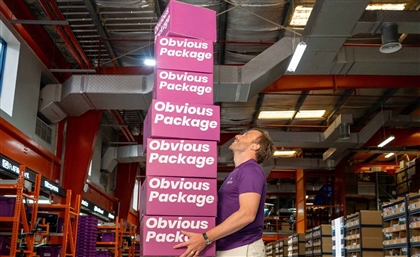Five Trends to Expect for MENA Startups in 2023
These five trends are expected to shape startups in the MENA region this year.

As the year went on, 2022 produced a growing number of challenges for MENA startups. Difficulties such as a global economic downturn, supply chain disruptions, and geopolitical tensions between Russia and Ukraine greatly impacted startups in the region. Egypt was particularly affected by the conflict, as the nation relies heavily on wheat imports from both Russia and Ukraine.
Despite it all, VC funding in the MENA region reached a record $3.2 billion, up 8% from 2021, according to Magnitt’s 2023 Emerging Markets Report. While these figures demonstrate positive growth, it’s important to take into account that funding continued to decline following a strong first quarter in 2022. Economic uncertainties and talks of a looming recession ultimately affected investor appetite in the second half of the year, resulting in low startup valuations and an increase in mergers and acquisitions (M&A).
With market conditions predicted to remain the same throughout much of 2023, many of the trends for 2022 are expected to carry through to this year, most notably the capital crunch. This will become especially pronounced for tech companies, which are already experiencing massive layoffs.
So, what will the startup landscape look like in 2023? Below are five trends that are expected to shape startups in MENA this year.
CAPITAL CRUNCH
With investors continuing to tighten their belts this year, there will be less liquidity circulating in the market to fund startups in the region. This funding squeeze will most likely result in lower startup valuations, which - according to Magnitt - will reach pre-pandemic levels and will vary across geographies.
Late-stage startups are expected to be the most impacted by the capital crunch, as they will struggle to raise large-scale funding from already cautious investors. Startups that can demonstrate a clear path to profitability and have a positive unit of economics, meanwhile, will be in a better position to raise investments.
While the capital crunch is expected to continue for much of 2023, funding may ease up towards the end of the year as markets start to rebound and as global economic outlook improves.
MORE EXITS
More startup exits are also predicted for 2023. As funding slows down, some startups will consider acquisitions as an alternative to raising investments. This was evident last year as startups in MENA witnessed record exits compared to 2021.
According to the same report by Magnitt, M&A activity increased by 71% from the previous year, with the UAE, Egypt and KSA doubling their exits YoY.
Some of the biggest acquisitions that took place in the region last year included KSA’s e-commerce startup Sary acquiring Egypt’s B2B platform Mowarrid, real estate startup Huspy acquiring Finance Lab, and super app Careem acquiring Denarii Cash.
FUNDING OPTIONS
As we have seen last year, debt financing is starting to make headway in the region, with some startups opting for this type of financing as opposed to going down the VC route.
A total of $260 million was raised in debt financing in 2022, according to Magnitt’s 2022 MENA Venture Debt Investment Report. Tabby, a UAE-based fintech startup, secured one of the largest venture debt deals in the region, raising $100 million in August last year. Other startups that have also recently raised investments through this type of financing include KarmSolar, which secured $3 million in debt funding from HSBC, and Blnk, which raised $23.7 million in both equity and debt financing.
Meanwhile, global investors are starting to take interest in MENA startups with the arrival of US-based Sequoia Capital in the region and New York’s Modus Capital launching a venture builder in Egypt. That’s in addition to 500 Global, a San Francisco-based venture capital fund, expected to open a new office in Cairo. While interest from international investors is a good sign for MENA startups, funding will ultimately depend on the current global economic climate.
INVESTMENTS TO VARY ACROSS THE REGION
Not all countries in MENA will fare equally this year in terms of investments. Funding will largely depend on the state of a country’s local startup ecosystem, as well as on the size and strength of its economy.
For example, the UAE - the most funded country in MENA raising $1.19 billion in 2022, according to Magnitt - is positioning itself to become a leading financial hub in the region. Earlier this month, Dubai announced a $8.7 trillion economic plan for the next decade to double the size of its economy and rank as one of the top four global financial centres in the world.
Meanwhile, Saudi Arabia ranked as the second most funded ecosystem in the region, recording $987 million in investments last year, up 72% compared to 2021, according to Magnitt. In addition, the country also benefited from a rise in oil prices, encouraging investors to support local startups to grow and expand across the region.
Besides an influx of capital, Saudi Arabia is also emerging as a fintech leader since the introduction of its new open banking framework in November 2022. With this new policy, banks and fintechs will be able to develop, test and launch their products, turning the country into a regional and global fintech hub.
Despite being a leading startup ecosystem in MENA, Egypt is expected to brace for some turbulence in 2023, particularly with a weakening local currency, rising inflation, and a shortage of foreign currency.
But it’s not all doom and gloom for Egyptian startups. Egypt still recorded an increase in funding in 2022 of $517 million, up 3% from the previous year, according to Magnitt. While funding is predicted to remain challenging in 2023, it will still trickle in and may even let up by the second half of 2023 if the world economy shows signs of recovery. One way Egyptian startups can mitigate against risk is by expanding to outside markets, particularly the GCC, to help diversify revenue streams and bring in hard currency.
FOCUS ON SUSTAINABLE GROWTH
Given the backdrop of macroeconomic challenges, the startups that will most likely succeed will be the ones who are most able to adapt to current market conditions. This usually entails being creative and resourceful with financing, cautious about managing costs and, most importantly, creating profitable revenue streams.
The ‘growth at all cost’ concept will have to take a back seat to sustainable growth to enable startups to extend their runway and prevent them from bleeding money.
Although today’s market conditions may be tough, they will force entrepreneurs to become more resilient and resourceful, and give them the opportunity to build startups that can withstand the test of time.
Trending This Month
-
Dec 28, 2025






















